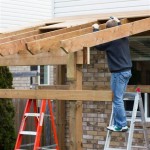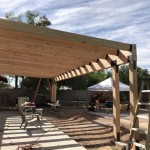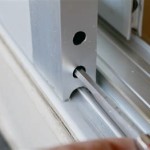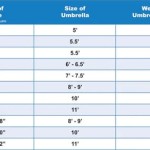Market Patio Umbrellas: A Guide to Selection and Use
Market patio umbrellas, also known as center pole umbrellas, are a ubiquitous feature of outdoor spaces, providing shade and protection from the elements for both residential and commercial settings. Their popularity stems from their versatility, ease of use, and aesthetic appeal. This article provides a comprehensive overview of market patio umbrellas, covering their components, types, selection criteria, maintenance, and common issues.
The term "market umbrella" historically refers to the type of umbrella used by vendors in open-air markets to shield their goods and customers from the sun and rain. These umbrellas were typically simple in design, featuring a central pole and a canvas or fabric canopy. Over time, this design has evolved and adapted for use in residential and commercial patios, decks, and outdoor dining areas, hence the name "market patio umbrella."
Market patio umbrellas consist of several key components that contribute to their functionality and durability. Understanding these components is essential for making informed purchasing decisions and ensuring proper maintenance.
The primary components of a market patio umbrella include: the canopy, the frame, the pole, the lift mechanism, and the base. Each of these components plays a crucial role and is manufactured from various materials impacting the umbrella's overall performance.
The canopy is the fabric covering that provides shade and protection. It is typically made from materials such as polyester, acrylic, or olefin. Polyester is a common choice due to its affordability and resistance to fading and mildew. Acrylic fabrics, like Sunbrella, are known for their superior UV resistance, colorfastness, and durability, making them a premium option. Olefin fabrics offer a good balance of affordability and performance, with decent resistance to fading and mildew.
The frame provides the structural support for the canopy. It consists of ribs or arms that extend from the central hub to the canopy edges. Frames are typically made from materials such as aluminum, steel, fiberglass, or wood. Aluminum frames are lightweight, rust-resistant, and ideal for coastal environments. Steel frames are strong and durable but can be susceptible to rust if not properly treated. Fiberglass frames offer excellent flexibility and wind resistance, making them a good choice for areas with frequent high winds. Wood frames provide a classic aesthetic but require regular maintenance to prevent rot and decay.
The pole is the central supporting column of the umbrella. It is usually made from the same material as the frame, such as aluminum, steel, fiberglass, or wood. Pole diameter and thickness influence the umbrella's stability and wind resistance. Thicker poles are generally more robust and suitable for larger umbrellas or areas with high winds.
The lift mechanism is the system used to raise and lower the canopy. Common lift mechanisms include push-button tilt, crank lift, and pulley lift. Push-button tilt mechanisms allow the user to tilt the canopy to adjust the shade angle. Crank lift mechanisms use a hand crank to raise and lower the canopy, providing smooth and controlled operation. Pulley lift mechanisms use a rope and pulley system to raise and lower the canopy, a simple and reliable option.
The base provides stability for the umbrella, preventing it from tipping over. Bases are available in various materials, shapes, and weights. Common materials include concrete, steel, resin, and cast iron. The weight of the base should be appropriate for the size of the umbrella and the expected wind conditions. Heavier bases provide greater stability. Bases are also available in wheeled options, allowing for easy repositioning of the umbrella.
Types of Market Patio Umbrellas
Market patio umbrellas are available in a variety of types, each with its own features and benefits. Understanding these different types can help in selecting the umbrella that best meets specific needs and preferences.
Standard market umbrellas are the most common type, featuring a central pole and a canopy that is typically round or octagonal. These umbrellas are available in a wide range of sizes, colors, and materials, making them suitable for various applications. They are relatively easy to set up and use, making them a popular choice for both residential and commercial settings.
Tilt market umbrellas offer the added functionality of being able to tilt the canopy to adjust the shade angle. This feature is particularly useful for blocking the sun as it moves across the sky. Tilt mechanisms can be either push-button or crank-operated. Push-button tilt mechanisms are simple and easy to use, while crank-operated tilt mechanisms provide more precise control over the tilt angle.
Offset market umbrellas, also known as cantilever umbrellas, feature a side pole and a canopy that is suspended over the seating area. This design allows for more flexible placement of the umbrella, as the base does not need to be directly under the canopy. Offset umbrellas are often larger than standard market umbrellas and provide a wider area of shade. They are a good choice for covering large seating areas or dining tables.
Solar market umbrellas incorporate solar panels into the canopy or frame to power integrated lighting or charging ports. These umbrellas offer a sustainable and energy-efficient way to illuminate outdoor spaces or charge electronic devices. Solar market umbrellas are available in various styles and sizes, making them a practical and eco-friendly option.
Commercial-grade market umbrellas are designed for heavy-duty use in commercial settings such as restaurants, cafes, and hotels. These umbrellas are typically made from durable materials and feature reinforced construction to withstand frequent use and harsh weather conditions. Commercial-grade umbrellas often have larger canopies and heavier bases for added stability.
Key Considerations When Selecting a Market Patio Umbrella
Selecting the right market patio umbrella involves considering several factors to ensure that it meets specific needs and preferences. Key considerations include size, material, wind resistance, lift mechanism, and style.
The size of the umbrella should be appropriate for the area it is intended to cover. A general rule of thumb is to choose an umbrella that is at least 2 feet wider than the area you want to shade. For example, if you have a 4-foot round table, you should choose an umbrella with a diameter of at least 6 feet. Larger umbrellas provide more shade but require heavier bases for stability.
The material of the canopy and frame should be chosen based on the climate and intended use. Polyester canopies are a budget-friendly option but may fade more quickly in direct sunlight. Acrylic canopies, like Sunbrella, offer superior UV resistance and durability. Aluminum frames are rust-resistant and ideal for coastal environments, while steel frames are strong but may require rust protection. Fiberglass frames offer excellent wind resistance. The material of the base should also be considered, with heavier materials like concrete and cast iron providing greater stability.
Wind resistance is an important consideration, especially for areas with frequent high winds. Umbrellas with vented canopies allow wind to pass through, reducing the risk of tipping over. Frames made from fiberglass or aluminum are more flexible and less likely to break in high winds. The weight of the base should also be appropriate for the expected wind conditions. Consider using a heavier base or securing the umbrella to the ground for added stability.
The lift mechanism should be chosen based on ease of use and desired features. Push-button tilt mechanisms are simple and convenient, while crank lift mechanisms provide smoother and more controlled operation. Pulley lift mechanisms are a reliable and low-maintenance option. Consider the height and reach required to operate the lift mechanism, especially for users with limited mobility.
The style of the umbrella should complement the overall aesthetic of the outdoor space. Market patio umbrellas are available in a wide range of colors, patterns, and designs. Choose an umbrella that matches the existing furniture and décor. Consider the shape of the canopy, with round and octagonal canopies being the most common. Also, consider the frame material and finish, with wood frames providing a classic look and metal frames offering a more modern appearance.
Maintenance and Care of Market Patio Umbrellas
Proper maintenance and care are essential for extending the lifespan of a market patio umbrella and keeping it in good condition. Regular cleaning, proper storage, and prompt repairs can help prevent damage and ensure optimal performance.
Regular cleaning is important for removing dirt, dust, and mildew from the canopy. Use a soft brush or cloth and a mild soap solution to clean the canopy. Rinse thoroughly with water and allow to air dry completely before storing. For stubborn stains, use a specialized fabric cleaner designed for outdoor use. Avoid using harsh chemicals or abrasive cleaners, as these can damage the fabric.
Proper storage is crucial for protecting the umbrella from the elements when it is not in use. Close the umbrella when not in use, especially during windy or stormy weather. Store the umbrella in a dry, sheltered location, such as a garage or shed. Use a protective cover to shield the canopy from dust, dirt, and UV rays. Avoid storing the umbrella in direct sunlight, as this can cause the fabric to fade.
Prompt repairs are necessary to address any damage to the canopy, frame, or lift mechanism. Repair any tears or holes in the canopy as soon as possible to prevent them from spreading. Replace broken or bent ribs in the frame to maintain structural integrity. Lubricate the lift mechanism regularly to ensure smooth operation. Consult a professional repair service for more complex repairs.
To prevent damage during windy conditions, take precautions such as closing the umbrella, securing it to the ground, or removing the canopy altogether. Strong winds can cause the umbrella to tip over, break, or become a safety hazard. Use a heavy base or secure the umbrella to a deck or patio with bolts or straps. Consider removing the canopy during periods of prolonged high winds.
By following these maintenance and care tips, the longevity and functionality of the market patio umbrella can be extended, providing years of comfortable shade and protection.

Mainstays 9ft Multi Stripe Round Outdoor Tilting Market Patio Umbrella With Crank Com

The 3 Best Patio Umbrellas And Stands Of 2024 Reviews By Wirecutter

Abccanopy 7 5ft Outdoor Market Patio Umbrella With Push On Tilt 8 Ribs 13 Colors Turquoise Com

Mondawe Best Solar Powered Market Patio Umbrella

9 Sunbrella Coronado Base Market Patio Umbrella With Push On Tilt Broe Pole Target

Maypex 9 Ft Steel Crank And Tilt Stripe Market Patio Umbrella In Black White 300032 The Home Depot

Better Homes Gardens Ventura 7 5 Black Fringe Round Market Patio Umbrella Com

9 Ft Market Patio Umbrella In Red Stripes Wyb 9ft Rs The Home Depot

10ft Patio Wooden Market Table Umbrella Pulley W 8 Bamboo Ribs Sunshade Canopy Target

Wilson Fisher Tan Rectangular Market Patio Umbrella 6 X 9 Big Lots Offset Outdoor Decor








